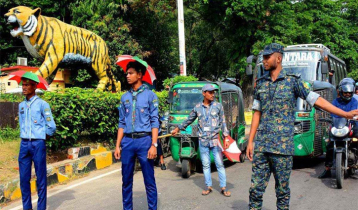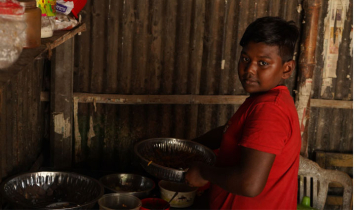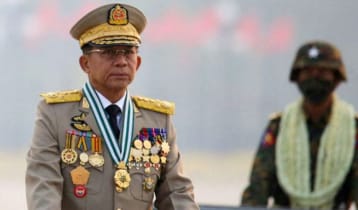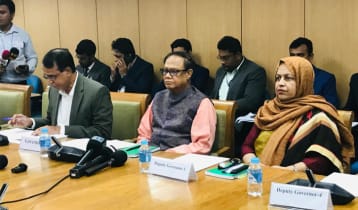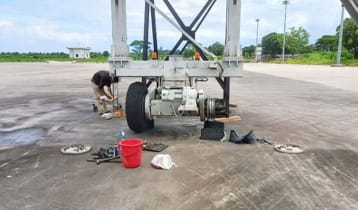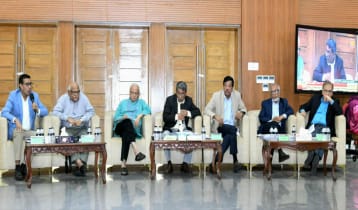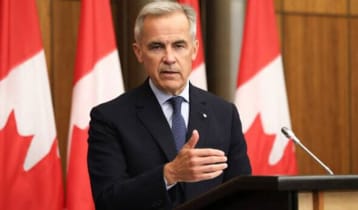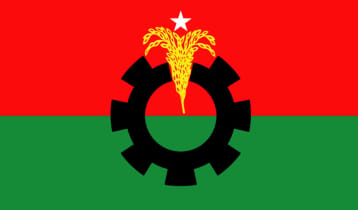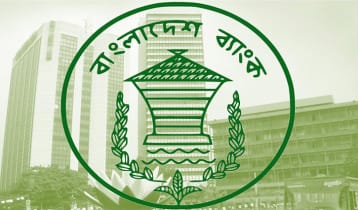Technical analysis of Padma Bridge
M Mahfuzur Rahman || risingbd.com
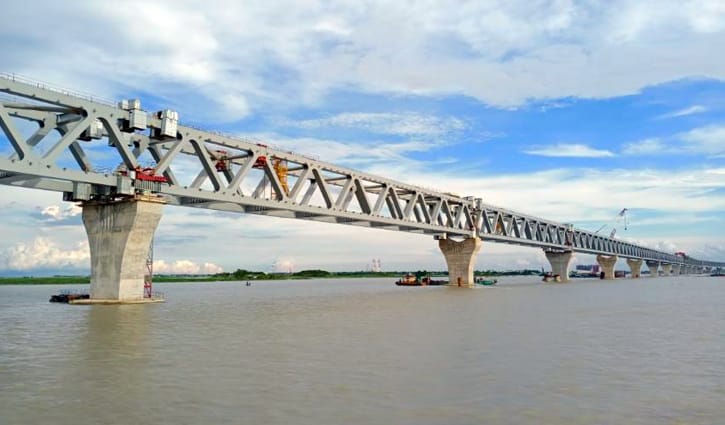
A multipurpose bridge. What happens when it’s a giant dream of a nation? It’s an attempt to awake, shake and jerk a nation as a whole. Is not it? Mongla, the second busiest seaport of Bangladesh while Benapole, the largest land port of Bangladesh- both of them are located in the southern parts of the country making importance for business. Crores of people are living in the 21 southern districts.
Have you ever wondered why no heavy industry has been set up in the southern part of Bangladesh yet? It’s a river. Padma is the largest river in the country. And this Padma kept the south separated from other regions woefully. The purpose of constructing the Padma Bridge is to connect the south-western parts of the country with the economic and business heart of the capital Dhaka. For this, Bangladesh took up a huge challenge of 21st century engineering!
Crossing the turbulent Padma and maintaining contact with the capital means a picture of the daily misery of the people of this region. But how easy is it for the developing Bangladesh to make this wonderful bridge in the heart of this devastating omnivorous Padma? What are the challenges? Who are behind the giant works?
China Railway Major Bridge Engineering Group Limited (MBEC) is working on the main bridge. MBEC is a subsidiary of China Railway Group Limited (CREC). Apart from the Padma Bridge, Major Bridge has built several other important infrastructures in Bangladesh.
These include Parksley Bridge, Third Karnaphuli Bridge, Dapdapia Bridge, Construction of Flyover at Kuril Intersection, Double-line Track from Tongi to Bhairab Bazar etc.
The company has also made a name for itself in China and around the world with their remarkable works. These include Hanoi Metro Line 2A, Vietnam; The Ulaanbaatar New International Airport Highway Project, Mongolia; Development Center for Disabled Children, Mongolia (The China-aided Project); Jakarta-Bandung High-speed Railway, Indonesia; Tel Aviv Light Rail (Western Segment) in Israel; Sandton Skye Deluxe Hotel Apartments, South Africa; Werksmans Office Building, South Africa; Qamchiq Tunnel of Anglian-Pap Electrified Railway, Uzbekistan; Addis Ababa-Djibouti Railway, Ethiopia; Boten-Vientiane Railway, Laos; Nabouwalu Road Upgrade Project, Fiji; Thomson-East Coast Line T302 Section, Singapore; Suai Highway Phase I, East Timor; Tanzania-Zambia Railway; The Palm Island II Reclamation Project, UAE; The High-speed Railway Project in Northern Venezuela; Mohammed VI Bridge, Morocco; Nyerere Bridge, Tanzania; The Light Railway Project in Addis Ababa, Ethiopia; A1 Highway Project in Botswana; Kuala Lumpur SGX (MRT) Light Rail Project in Malaysia; New Party Headquarter Building, Zambia; Electrification Railway (Iran); Light Rail Transit (Singapore); Kinshasa Road in D.R. Congo; Ghana Accura–Kumasi Road; Mpiji Bridge along Dar es Salaam Bagamoyo Road, Tanzania; Highway Tunnel (Teheran); Marco Stadium, Mali; National Parliament Building, Gabon; Tongjiang Cross-river Railway Bridge, Russia etc.
The physical work of the Padma Bridge is divided into several packages- Main Bridge, River Training, Jazira Approach Road, Mawa Approach Road, Toll Plaza and Mawa-Jazira Service Area. Major Bridge Group is constructing the Padma Bridge in a steel truss girder structure. A giant floating crane named Tianyi was used to build the bridge. The crane was developed by the MBEC authorities themselves to speed up the construction work. The lifting capacity of the crane is 3,600 tons!
Whoever crosses the Padma Mawa-Jazira point, will see the huge work of covering the two banks of the Padma! You will see innumerable floating cranes in the river. Each pile, 120 meters high, was beaten with a giant hydraulic hammer brought from Germany. The specialty of the device is that it can apply pressure up to 25,000 tons at a time. It is said that it is heavier than 10 Boeing jets! At this weight the poles become stiff and sit at the bottom of the river sustainably. Each of the pillars of the huge bridge is made up of 6, somewhere or 7 piles.
What is the specialty of Padma river? How challenging is the construction of a bridge over the river Padma? According to experts, it is second only to the Amazon River in the world in terms of water flow. Originating from the Himalayas, Padma came to Rajshahi over India and took its name. The river joins the Jamuna at Goalanda and the Meghna at Chandpur to the east. According to official sources, the maximum depth of the Padma is 1,561 feet (479 meters) and the average depth is 968 feet (295 meters).
Studies say, the water that flows at Mawa Point every 20 seconds is equal to the water used in the capital all day. 1 lakh 40 thousand cubic meters of water flows in the Padma every second.

The soil at the bottom of the river is usually very soft like a layer of sand. Whatever is to be ingested is like swallowing. In other countries, bedrock is easily found at the bottom of rivers when Padma shown exception. The Bedrock in Padma is being found in much deeper. The water level from the bottom of the river Padma is equal to that of a 13-storey building.
Ganga on one side, Brahmaputra on the other- the waters of these two huge and long rivers of South Asia are named after this Padma in the Bay of Bengal. These two rivers carry the most sediment in the world. Many areas of Bangladesh have been formed by the siltation of the two rivers. The river is about six kilometers wide at the bridge construction site. The bridge has to cope with the pressure of the current coming down from the upper reaches.
One of the biggest challenges in building bridges on the Padma is river training. Sinohydro, another Chinese company, was given the task of governing the river. Concrete blocks made by Sinohydro are spread over an area of about 14 and a half kilometers on both banks. 38 lakh tons of stones are needed for river management with 1 core 33 lakhs of blocks, having nearly 2 crores pieces of Geobags!
In an interview with the BBC, Wang Kun, project director of the Padma Bridge Rail Link, said: ‘We have gone through the most technical challenges in building the bridge. The training of soft soil here is quite a difficult task. As Bangladesh is located in Asia and the Pacific, the challenge of building bridges on land here is already high. We had to go much deeper in the soil. The soil was getting so soft that in some pilings we had to go over 100 meters deep. For this, many modern equipments have been used.'
According to Wang Kun, PVC technology has been used to make soft soils suitable with the use of a lot of heat and electricity in the process. In addition, the ground-lock has been specially prepared with the help of chemical, mechanical, polishing or CMP technology. Some industrial robots have also worked in making the bridge. Where it is dangerous for humans to work, work has been done with welding robots. Many new technologies have been used to increase the productivity of the bridge. Artificial Intelligence (AI) will be applied in the supervision of the bridge once the construction work is completed. An automatic signal control system will be installed. The AI technology will be utilized in the railway managing system in a bid to avoid incidental issues.
A special service area has been constructed in the area adjacent to the bridge. What’s not here? It may seem like a bright and stunning resort. There are dozens of duplex accommodation with all world class facilities. Motel match, water tank, health center, fire station, power suction, football field, basketball court, swimming pool, indoor stadium, cricket field and all other facilities. Project officials are using these places as their office. At the end of the bridge work it will undoubtedly be transformed into a high quality elegant resort!
About 2,542 hectares of land has been acquired for Padma Bridge construction. The construction of connecting roads is also a part of bridge construction. A 12-kilometer road of Mawa and Jazira is going to connect the Padma Bridge with the national network.
The bridge stretches from Mawa in Munshiganj to Jazira in Shariatpur. The length of the main four-lane bridge is 6.15km. The number of piles is 294. Road viaduct is 3.148 km and rail viaduct is 0.532 km. If the part of the land is considered, the whole bridge will be 9 kilometers with approach road is 12.117 km. The train will run through a steel span on the pillars. Motor vehicles will run through the upper floor of the two-storey bridge. With 42 pillars, the distance from one pillar to another is 150 meters. 41 spans have been attached to 42 pillars. Each span weighs about 3,200 tons. The revised construction cost of the bridge is Tk 30,193 crore. Earthquake tolerance level 9 on the Richter scale when the lifespan of the bridge is measured 100 years.
The Padma Bridge has given birth to many records in the field of modern architecture. Laying piles at a depth of 120 to 122 meters in the ground is one of these records. No other bridge in the world has had piles penetrated so deep. The depth of each pile is equal to 40 to 41 storey-building. It is said that the record cannot be broken until a bridge is built over the Amazon.
The second world record is the bearing between the pillar and the span. Never before in the world has such a large bearing been used on a bridge. The weight of each bearing is 10,500 metric tons (1,05,00000 KGs). Earlier such bearings were used on a bridge in America, weighing 8,000 metric tons (8000000 KGs).
The third wonder is river training. According to the Bangladesh Bridge Authority, an area of 14 km (1.6 Mawa+12.4 Jazira) has been brought under river governance. The river training has cost more than Tk 9,400 crore. The next record is the crane used in the bridge. The crane used to place the span on the pillars was brought from China. It has to pay Tk 30 lakh per month as rent. In the three and a half years till 2020, the total expenditure has been Tk 12 crore 60 lakh. The crane has been rented for such a long time to build this bridge for the first time in the world construction history. The market value of the crane is Tk 2,500 crore.
In addition, three giant yards were built at the ends of Mawa and Jajira to make rail and roadway slaps. One of them is in Mawa and the other two in Jazira. Each yard is about one-kilometer long on average.
The distance from the surface of the water to the bottom of the span is 18 meters. This distance from the water to the span is equal to a six-story building. As a result, any large vessel can travel effortlessly through the bottom. The rods, sand, cement, steel materials used in the bridge are all produced in Bangladesh. Bangladeshi companies provided these materials.
Surprise does not end here! Seven more pillars have been constructed at a depth of just two kilometers from the bridge across the Padma. These pillars are several times higher than the Padma Bridge. These will turn into huge individual towers. This tower is for electricity connection for the people on both sides of the river. (For the main bridge) About 4,000 people are working on the longest bridge in South Asia. About 2,000 of them are Chinese nationals while rest of them are Bangladeshis.
Padma Bridge is the first all-weld, super-thick-steel, double-duty steel truss bridge following European standards in Bangladesh. The Padma Bridge is the first in the world being constructed with concrete and steel. The bridge will have transportation facilities including gas, electricity and optical fiber connection. The road connecting Padma Bridge at both ends (Jajira and Mawa) is 14 km. The height of Padma bridge from the water level is 60 feet. The piling depth of the bridge is 383 feet. The last span was installed on December 10, 2020. Through this the main structure of the bridge is visible now.
How strong is the Padma Bridge? What about the durability? Technological analyzes say that if 65 meters or more of soil is removed from the bottom of the Padma Bridge and at the same time if there is an earthquake of 7.5 or 8 Richter scale and at the same time if a ship weighing over 4,500 to 5,000 metric tons comes to the bridge. The bridge is able to stand proudly even after pushing hard on the pillars.
This will be the first integrated communication system in Bangladesh centered on the Padma Bridge. The standard of living of the people of the south-west will change. The agricultural products of this region will easily spread to different parts of the country including Dhaka. Direct communication will be established with the ports of Mongla and Benapole in the capital and port city of Chattogram.
How much will be the toll at the bridge crossing? The government’s bridge department has proposed a toll rate for the Padma Bridge. That is one and a half times more than the ferry toll. For the next 15 years after the launch of the bridge, the toll will have to be calculated from Tk 105 to a maximum of Tk 2775 per vehicle. The toll rate will be increased by 10 percent every 15 years.
However, the final decision in this regard is in the hands of the government. The bridge department has an agreement with the finance department of Bangladesh. According to the agreement, the government has given a loan of Tk 29,893 crore for the construction of the bridge. The bridge authority will pay it at the rate of 1 percent interest within 35 years. The toll rate has been proposed keeping in mind the repayment of that loan.
The public will be benefited in many ways through the Padma Multipurpose Bridge. Experts say, the socio-economic structures in the areas will dramatically be changed. Citing the survey, Shafiqul Islam, director of the Padma Bridge project, said the poverty rate for the bridge would be reduced to around one percent. The region’s GDP will grow by more than 3 percent. And the total domestic GDP growth will be more than 1.23 percent.
The use of the Padma Bridge will reduce the average distance of about 100 km from the southern region to Dhaka. In a 2011 report, the World Bank said that the launch of the Padma Bridge would reduce travel time to Dhaka-South by about two hours. Poverty in the region will be reduced by 1 percent every year. Nationally, poverty will be reduced by 0.8 percent. Innumerable people will also be freed from the clutches of river erosion.
The China Railway Group wrote on its official website about the Padma Bridge: Once completed, this bridge will rise to be a major communication conjunction on the blueprint of the ‘Belt and Road Initiative’, and an important channel connecting China and Pan-Asia railway. The Bridge may have to wait until mid-2022 to be operational. Bridge is also an important channel that connects China and the “Trans-Asian Railway”. The bridge, once completed, will cut travel time between the north bank and the south bank from eight hours to 10 minutes and bring 1.5% growth to Bangladesh’s GDP.
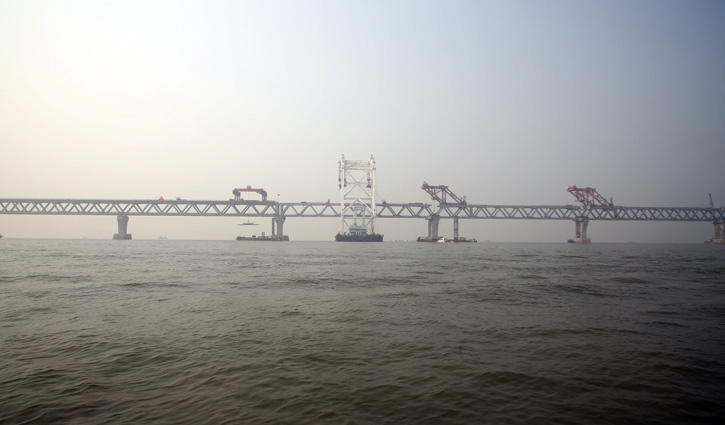
The first span of the Padma Bridge sat on 37th and 38th pillars on September 30, 2017. And the last, that is, by installing the 41st span, the people on both sides of the Padma are bridged.
According to a 2011 report by the Asian Development Bank, the number of people living below the poverty line in the south is 5 percent higher than in other parts of the country. But a quarter of the population lives south of the Padma. And the underdeveloped communication system is primarily responsible for all this. If the Padma bridge is opened, their lives will be improved quickly.
In 1997, the government led by the then Prime Minister Sheikh Hasina took up the idea of constructing the Padma Bridge. At this time, it was decided to conduct a survey for the Padma Bridge. Dr. Jamilur Reza Choudhury was appointed as the head of the expert team of the Padma Bridge project. The Japanese government was contacted in 2004 to study the feasibility of the river. After much screening, a team from the consultancy firm JICA selected Mawa Point for making the bridge.
They gave the final report after the feasibility study in 2008. The government led by Sheikh Hasina came to power again in 2009. The JICA report was approved at the first meeting on January 19 the same year. The actual design process of the bridge begins without taking any time. The United States-New Zealand-Australia-based consultancy firm Maunsell-Aecom was hired to prepare the detailed design on the projected bridge.
From 2010 to the middle of 2014, the Padma Bridge witnessed many dramatic events. Corruptions allegations came one after another from the World Bank, the acquittal of the accused, Syed Abul Hossain lost his position as the minister of communications and the trial in a Canadian court etc. The World Bank turned its back from the project. Closed down all the financing relations related to the project. The government also boycotted the World Bank in reaction.
On June 17, 2014, a decision was taken that the bridge will be constructed with the country’s own finance. Undoubtedly it’s a bold decision from the government of Bangladesh. The government signed an agreement with the China Major Bridge Company. The huge work started the same year.
What fundamental changes will the Padma Bridge bring to the country? In this question, two positive changes can be mentioned in bold. A) It will save time in human travel and transportation of goods. Economic activities and trades will be more dynamic. Employment will be increased. B) Many infrastructural developments will take place in this area. The bridge will play a positive and unprecedented role in the development of the entire south-west. New industries will be built with a breakthrough will come in the communication system across the region. Crores of people are waiting to touch the dream bridge now.
Writer: Journalist and Frist Senior Deputy Assistant Director (Media) of Walton Group. E-mail: [email protected]
/AI

